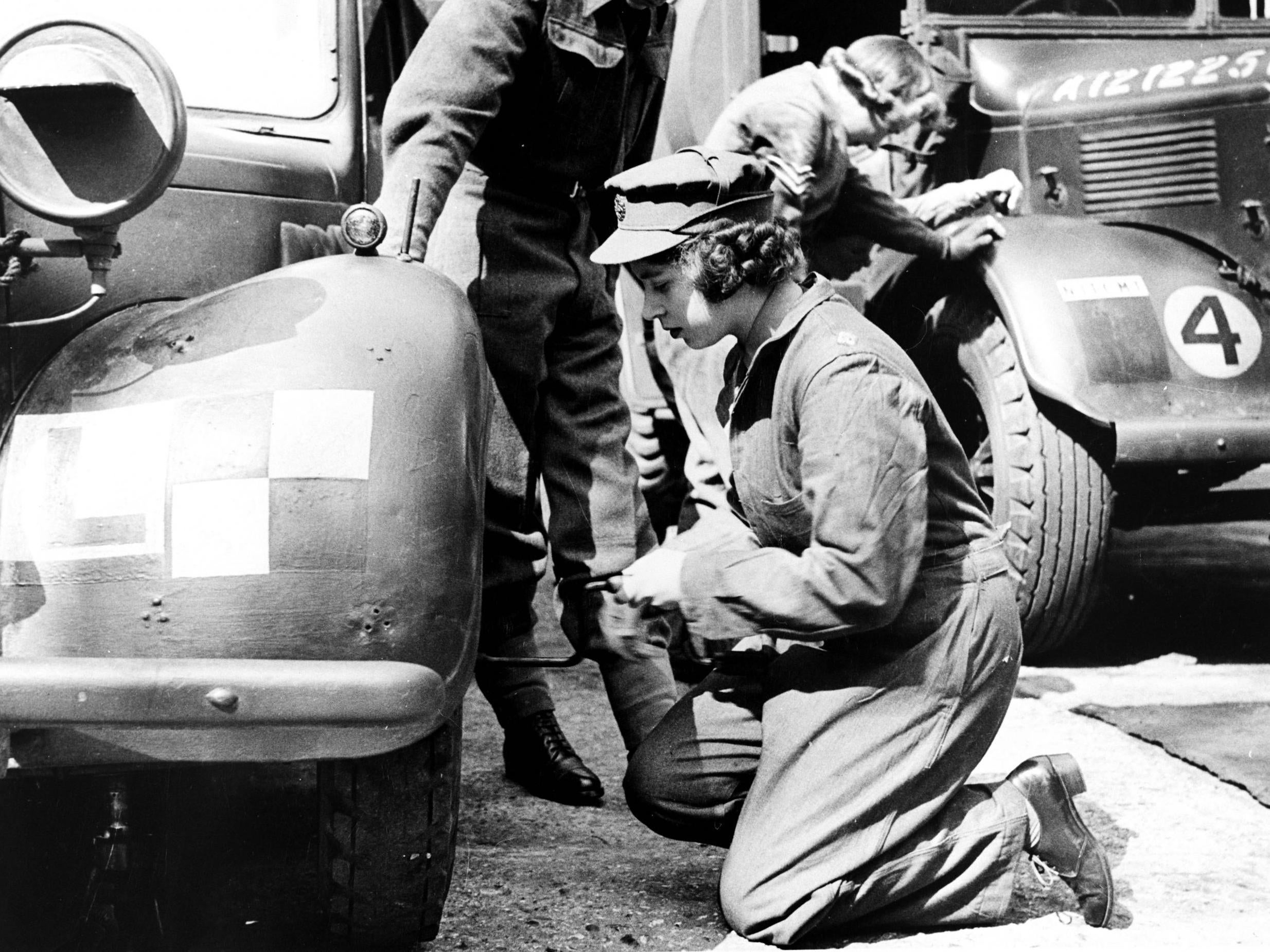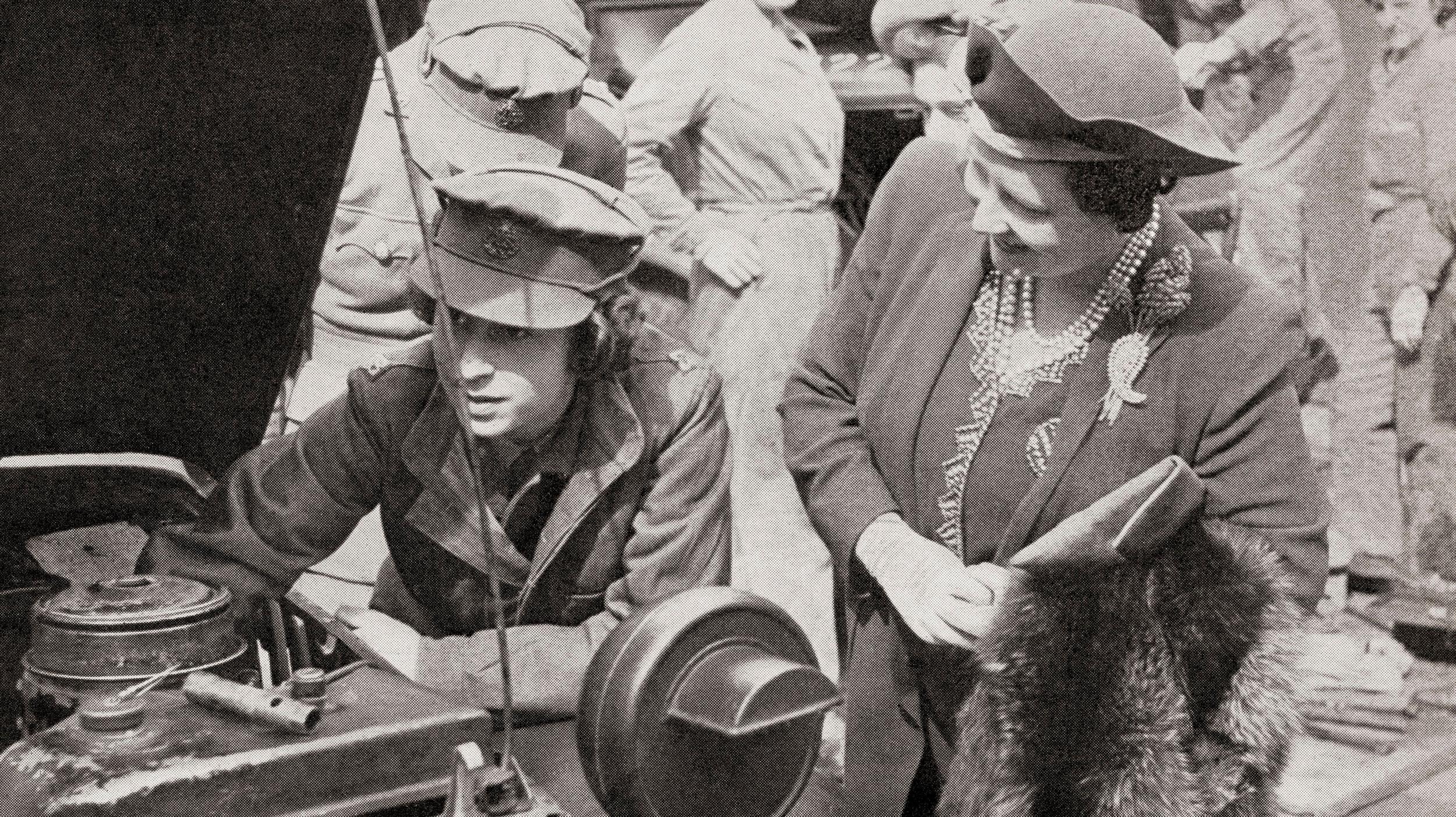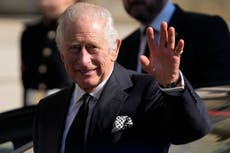Our Queen at War: Princess Elizabeth’s role in the British armed forces during the Second World War
As a princess, Queen Elizabeth joined the Women’s Auxiliary Territorial Service in the Second World War

Your support helps us to tell the story
From reproductive rights to climate change to Big Tech, The Independent is on the ground when the story is developing. Whether it's investigating the financials of Elon Musk's pro-Trump PAC or producing our latest documentary, 'The A Word', which shines a light on the American women fighting for reproductive rights, we know how important it is to parse out the facts from the messaging.
At such a critical moment in US history, we need reporters on the ground. Your donation allows us to keep sending journalists to speak to both sides of the story.
The Independent is trusted by Americans across the entire political spectrum. And unlike many other quality news outlets, we choose not to lock Americans out of our reporting and analysis with paywalls. We believe quality journalism should be available to everyone, paid for by those who can afford it.
Your support makes all the difference.The Queen, who died on Thursday 8 September aged 96, became the longest-reigning monarch in history celebrating her platinum jubilee this year.
However, before assuming her regal responsibilities in 1952, the Queen took on another role, joining the Women’s Auxiliary Territorial Service during the Second World War.
The monarch’s position as a driver and mechanic during the war was explored in a documentary that aired on ITV in 2020, titled Our Queen at War.
Here is everything you need to know about Princess Elizabeth’s past in the armed forces.
What was the Queen doing before she joined the armed forces?
When the Second World War began in 1939, Princess Elizabeth was 13 years old while her younger sister, Princess Margaret, was nine.
It was suggested that the young princesses should be evacuated out of the country to North America or Canada.
However, the Queen Mother (who was Queen at the time) was adamant in her refusal to leave, stating: “The children won’t go without me. I won’t leave the King. And the King will never leave.”
The princesses thus remained in the UK, flitting between Balmoral Castle in Scotland, Sandringham House and Windsor Castle, where they eventually settled for several years.
In 1940, Princess Elizabeth made her first radio broadcast, addressing child evacuees.

“We are trying to do all we can to help our gallant sailors, soldiers and airmen, and we are trying, too, to bear our own share of the danger and sadness of war,” she said during BBC’s Children’s Hour.
“We know, everyone of us, that in the end all will be well; for God will care for us and give us victory and peace. And when peace comes, remember it will be for us, the children of today, to make the world of tomorrow a better and happier place.”
When was she given her position in the armed forces?
As Princess Elizabeth neared her 18th birthday, it became apparent that she felt keen to help in the war effort.
In 1945, Life magazine published an article that stated that after “long deliberations”, King George VI had decided that “her training as a princess outweighed the nation’s increasing manpower problems and that ‘Betts’ should not join any of the women’s auxiliaries, nor work in a factory”.
Nonetheless, shortly thereafter, it was declared that the heir presumptive had been granted a commission as an honorary second subaltern in the Auxiliary Territorial Service (ATS) on 24 February 1945.
The announcement was made in a supplement to the London Gazette on 9 March 1945.

What did her Second World War service entail?
Once she joined the Auxiliary Territorial Service, Princess Elizabeth trained as a driver.
After passing the military driving test, she became a driver for the Second Subaltern Windsor Unit.
The princess also learnt how to repair vehicle engines as a mechanic in her unit.

She was later promoted to the rank of honorary junior commander, which at the time would have been the female equivalent of becoming a captain.
One day, she received a visit from her mother, Queen Elizabeth, who watched as her daughter explained what her role entailed.
In the issue of Life magazine published in 1945, it explained that while the princess took up service in the armed forces, she “did not sleep at the camp but motored each night to Windsor Castle, showing up the next morning at 9 o’clock”.

The teenager was reportedly surprised by the amount of work that went into preparing for a royal engagement when she was visited by her parents, the King and Queen.
“I never knew there was quite so much advance preparation. I’ll know another time,” she said as she helped to clean the camp.
“It seems so strange to watch them drive away,” the princess added.
The Queen became the first female member of the royal family to serve in the armed forces and is the only living head of state to have served in the Second World War.
Follow the latest updates following the death of Queen Elizabeth II here



Join our commenting forum
Join thought-provoking conversations, follow other Independent readers and see their replies
Comments